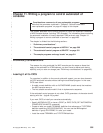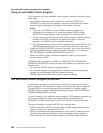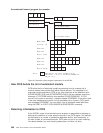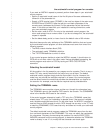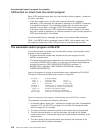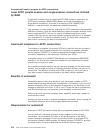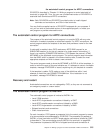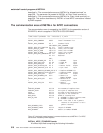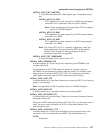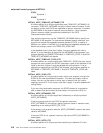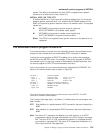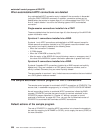
Chapter 12. Writing a program to control autoinstall of APPC
connections
Considerations common to all user-replaceable programs
Note that the comments contained in “Chapter 5. General notes about
user-replaceable programs” on page 401 apply to this chapter.
This chapter describes how to write a program to control the automatic installation
of local APPC connections. For information about controlling the automatic
installation of local VTAM terminals, see “Chapter 10. Writing a program to control
autoinstall of terminals” on page 485. For information about controlling the
installation of shipped terminals and connections, see “Chapter 13. Writing a
program to control autoinstall of shipped terminals” on page 523. For information
about controlling the installation of virtual terminals used by the CICS Client
products, see “Chapter 14. Writing a program to control autoinstall of Client virtual
terminals” on page 531.
The chapter is divided into the following sections:
1. “Preliminary considerations”
2. “The autoinstall control program at INSTALL” on page 515
3. “The autoinstall control program at DELETE” on page 519
4. “The sample autoinstall control program for APPC connections” on page
520.
Note: In this chapter, “connection” and “session” are used as general terms when
explaining autoinstall. The names “CONNECTION” and “SESSIONS” are
used to indicate the CICS resource types used to create the definitions.
Preliminary considerations
In considering the autoinstall of local APPC connections, we need to distinguish
between the following:
1. Local APPC single-session connections initiated by CINIT requests
2. Local APPC parallel- and single-session connections initiated by incoming bind
requests. (By “incoming” we mean that the request is initiated by the partner
system.)
Local APPC single-session connections initiated by CINIT
Autoinstall of local APPC single-session connections that are initiated by CINIT
requests works in the same way as autoinstall for terminals. You must provide a
TERMINAL—TYPETERM model pair, and a customized version of one of the
supplied autoinstall control programs, DFHZATDX or DFHZATDY. See “Chapter 10.
Writing a program to control autoinstall of terminals” on page 485.
© Copyright IBM Corp. 1977, 1999 513



